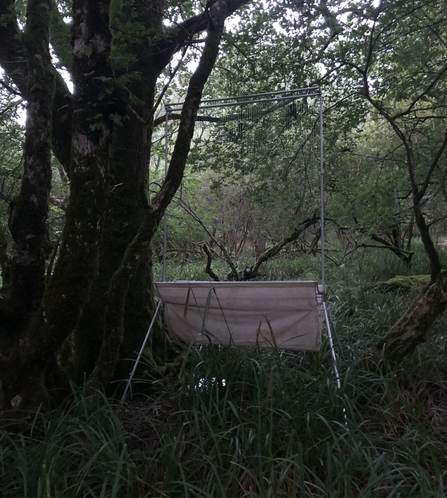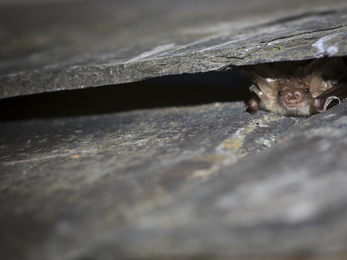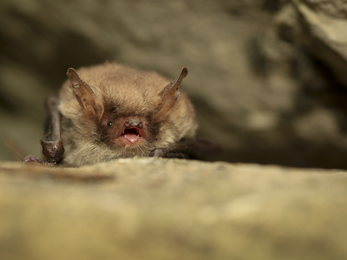Bat surveys are an essential part of the work we do to help biodiversity and provide bats with great habitats in Dorset's woodlands. You can help support this work by donating to the Woodland Recovery Appeal today.
Woodlands are key to supporting the majority of our UK bat species in some way. For a number of species, it is their primary habitat, supporting all stages of life – providing foraging, roosting and breeding opportunities. For other bat species, woodlands, trees and hedgerows are the highways of the landscape. As such, fragmentation of woodlands has huge impacts for bats. By reconnecting these isolated pockets, through natural regeneration or planting trees, we can help to provide safer corridors for bats to navigate the landscape.
Our task tonight is to understand more about which species are using the wood and how. We load ourselves up with kit, as well as the necessary snacks and flasks of coffee. Then we begin the 10-minute tramp to base camp through sodden vegetation.
Woodland provides the ideal habitat for our bat species. The canopy and understory is alive with insect life of all kinds to sate the appetite of a hungry bat. Bats can eat thousands of insects in one night, fuelling their high energy demands. They not only catch them from the air but will pick them from vegetation and even crawl on the floor for them! The cover of the canopy helps conceal the bats and buffer them from environmental conditions outside the wood.
We set up base camp, then split up to set up our equipment. We are using a harp trap that will catch bats as they fly around the woodland. Once harmlessly caught, we can examine the bats, determine the species, their sex, age, and breeding status. They are then freed to go about the rest of their evening.








